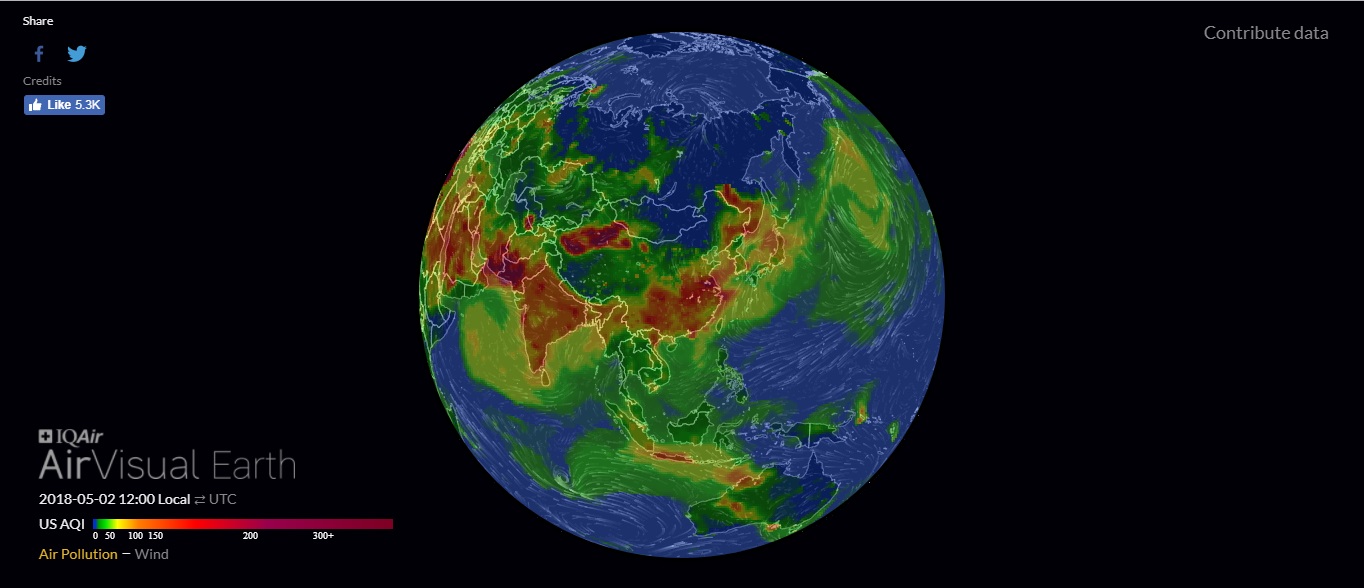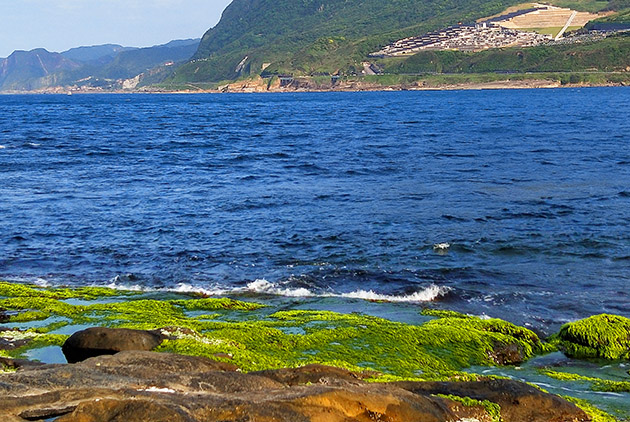Air Pollution
Anxious Skies, Taiwan’s New Environmental Battlefield

Source:Shutterstock
The passage of the Environmental Impact Analysis for the proposed Shen’ao coal-fired power plant has ignited popular concerns about air pollution. Over the past two years or more, protests against air pollution have continued unabated. On the heels of the anti-nuclear movement, opposition to air pollution has become the latest environmental battlefield and newest challenge for industry in Taiwan, and a measure by which political parties are judged at election time.
Views
Anxious Skies, Taiwan’s New Environmental Battlefield
By Fuyuan HsiaoCSR@CommonWealth
Guess what household item garnered the highest sales in Taiwan last year?
Face masks.
In mid-April, Yahoo! Kimo announced its list of the best selling items in its online store in 2017. Topping the rankings was surgical face masks, which saw the most growth (106 percent), especially among buyers from Taiwan’s central and southern regions: Kaohsiung, Pingtung, and Chiayi City. In the consumer electronics category, air purifiers achieved the second-highest sales growth, jumping by 39 percent.
What does this make you think of? Perhaps it reminds you of a topic that frequently grabs headlines in Taiwan - air pollution.
As surgical masks and air purifiers have become part of daily life, the public has become somewhat desensitized to the issue of air pollution. Just recently, at 11 a.m. on April 7, the Environmental Protection Administration’s Taihsi monitoring station recorded an air quality index (AQI) of 500, an all-time historical high, as well as the first time since Taiwan’s adoption of the new AQI system in December 2016 that it entered the Brown zone, indicating a threat to human health. Moreover, the threat level persisted for over seven hours. Last January 3, a Brown warning level of 400 on the AQI was recorded at the Lunpei monitoring station in Yunlin County. Citing a “mechanical malfunction”, the EPA deleted the figure.
On that day, the village of Taihsi was enveloped in a thick smear of opaque cream-colored air.
Good Air Quality Less Than 40% of the Time
According to an air quality monitoring report prepared by the Environmental Protection Administration, the average AQI in Taiwan throughout 2017 was 68 (a “moderate” rating), and air quality only rated “good” 39 percent of the time for the entire year.
Doctor Yeh Guang-Perng, a gynecologist at Changhua Christian Hospital, believes that even though Taiwan faces a host of pesky challenges, air pollution is currently the most critical issue.
Standing by the roadside with a full shock of white hair, Dr. Yeh strikes quite a prominent figure. Under the bright sun in 30-degree heat, wearing a surgical mask and black T-shirt emblazoned with the slogan “Fighting for Air” and a baseball cap that says “Fight Air Pollution, Safeguard Health,” after waiting for a bus for less than a minute he pulls our CommonWealth reporter into a roadside convenience store, not to escape from the heat into the air-conditioned atmosphere, but because “standing at an intersection is the worst—the air is the dirtiest,” he explains.
Dr. Yeh has devoted the last seven years to the fight against air pollution. Last December 17, Air Clean Taiwan (ACT), an anti-air pollution alliance Yeh formed with concerned colleagues in the medical field, organized a major rally in Taichung attended by five city and county chiefs from central Taiwan.
Perhaps a lone gynecologist stepping out to fight air pollution sounds somewhat like Don Quixote tipping windmills.
“Food and water aren’t so scary, because you have choices. You can choose to spend money on better quality products. But air is the most frightening. It’s free, but in this case ‘free’ means the highest cost. Every year the national health insurance system spends over NT$10 billion on illnesses attributable to air pollution,” notes Yeh. When the conversation turns to air pollution, Dr. Yeh can go on at considerable length, discussing everything from air pollution’s impact on neural development in the fetus to Taiwan’s number-one killer, lung cancer.
Whisper Thin, Gigantic Threat
According to World Health Organization (WHO) reckoning, three million people die each year from outdoor exposure to air pollution. The peskiest foe in humanity’s war against air pollution is fine particulate matter measuring 2.5 micrometers in diameter, or just one twenty-eighth the thickness of a human hair, commonly referred to as PM2.5. Factories, cars and motorcycles, coal-fired electricity plants, smoking, smoked meats, incense used in religious rituals and offerings, and firecrackers and fireworks set off during temple festivals all cause PM2.5 particle pollution.
Early this century, PM2.5 became a hot topic of focus in many countries. In 2002, the United States took the lead in setting national standards for PM2.5 of 12 micrograms per cubic meter. The WHO followed suit, establishing an annual standard of just 10 μg/m3. The US-based non-profit Health Effects Institute (HEI) conducted a major study in conjunction with researchers at the University of Washington and the University of British Columbia across 195 countries worldwide, noting that around seven billion people worldwide live in areas exceeding the PM2.5 standard.
Looking at the global 3D air pollution chart, Asia almost always appears as a big sheet of red, indicating severe air pollution. And Taiwan is no exception. Since starting to study national air quality standards in 2005, the EPA has outfitted each monitoring station with PM2.5 detection instruments. The new national standard was set at 15 μg/m³ in 2012, six months after China - a country with more severe PM2.5 issues - announced its own standards.

The existence of national standards should not be taken to mean that these standards are being met or exceeded. Last year (2017) Taiwan’s annual PM2.5 level averaged 20.7, exceeding limitations. Shockingly, Nantou County, known for its spectacular mountains and lakes, had the highest index anywhere in Taiwan at 27.5.
Just how high is Taiwan’s PM2.5 level? CSR@CommonWealth recorded random statistics from the Airbox urban PM2.5 observation website at 12:30 PM on April 22, which coincided with International Earth Day. At that time, over 90 percent of measurements on the western side of Taiwan were 35 or higher, as indicated by yellow circles. Among these were quite a few purple spheres showing severe exceeding of standards, including readings of 139 at Xinyi Elementary School in New Taipei, 105 at Tungshih Elementary School in Chiayi, 108 at Lungkang Elementary School in Taichung, and 120 at Hsinfeng Township in Hsinchu. Not a single region, from north to south and in between, was up to standard.
What Will Become of the Green Seas and Blue Skies?
A day of walking around the Shen’ao area near Ruifang brings Dr. Yeh’s message home clearly, that construction of the Shen’ao coal-fired power plant “is the wrong method of power production in the wrong place.”
Lin Wen-ching, a noted authority on the history and culture of the Ruifang area, took Dr. Yeh hiking on the hillsides surrounding Shen’ao, citing mountain topography, northeasterly wind patterns, and the Keelung River Basin to explain in detail the potential impact the power facility will have on the area. Lin stressed that the tallest hills in the area do not exceed 200 meters, yet the coal-fired plant’s smokestacks will reach 250 meters high. “It’s only 40 minutes by car from Taipei, and once the Shen’ao power plant goes into operation the impact will be felt in Keelung, Yilan, New Taipei, and Taipei City alike,” stated Lin Wen-ching bluntly.
Less than 10 minutes on foot from the Shen’ao power station via the Fantsai’ao fishing village lies the famous Elephant Trunk Rock scenic spot. This unusual rock formation has looked out upon the azure seas and blue skies for ages. What will become of it after the new coal-fired power plant begins operation?
 What will become of the coastal landscape? Photo: Fu-yuan Hsiao
What will become of the coastal landscape? Photo: Fu-yuan Hsiao
For the government, a nuclear-free homeland, providing electricity, and eliminating air pollution are all sticky issues, and no decision is easily made. Before the arrival of stable and effective green energy, as the public clamors for clean air to breathe, all the private sector and industry can do is to try and cut down on the consumption of electricity.
Diagnosed with lung cancer two years ago, Tuan Hsing-chien, chairman of display panel maker Innolux, has especially strong feelings about energy conservation. Tuan can still remember his father taking him as a young boy to see a power plant. When the public used electricity the generators would turn, and the more electricity was used, the faster the generators would work. To this day, every time he uses electricity, Tuan thinks of those generators working hard to make electricity. As a result, “I find myself switching off the lights wherever I go,” he says.
Tuan calls for “Big (energy) users to be held accountable. Corporations should step up and raise standards, lower emissions, and maximize energy conservation.” Tuan readily admits that Innolux engages in large-scale manufacturing in Taiwan, consuming a vast amount of energy. Yet, if large enterprises took the lead in energy conservation there might be no need to construct a new coal-fired electrical power plant in Taiwan.
Air Quality FAQ: The Air Quality Index (AQI) is the standard for air quality set by Taiwan’s Environmental Protection Administration (EPA). The AQI is the sum total of atmospheric concentration of various factors potentially affecting human health, including ozone (O3), fine particulates (PM2.5), particulate matter (PM10), carbon monoxide (CO), sulfur dioxide (SO2), and nitrogen dioxide (NO2). The EPA divides air quality into four categories, namely Green for “good” (under 50), Gold for “moderate” (51-100), Orange for “unhealthy to sensitive population groups” (101-150) and Brown for “dangerous” (300 and higher). There are currently 77 monitoring stations throughout Taiwan. For more information on AQI levels, visit the EPA’s air quality monitoring site at https://taqm.epa.gov.tw/taqm/tw/AqiMap.aspx, or download the Real-time EnvironmentNow app.
Translated by David Toman.
Additional Reading
♦ 'Go Get a Lung Screening Immediately, Even If You Don’t Smoke!'
♦ Bill Gates Wants to Strip CO2 from the Air and Turn It Into Clean Fuel
♦ Does ‘Clean’ Coal Power Exist?







